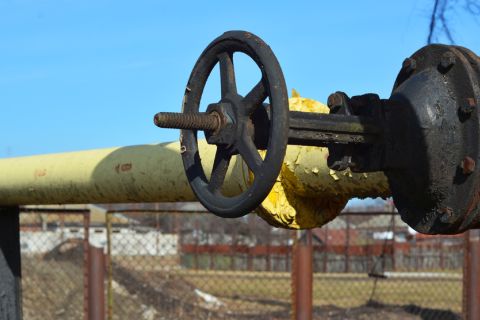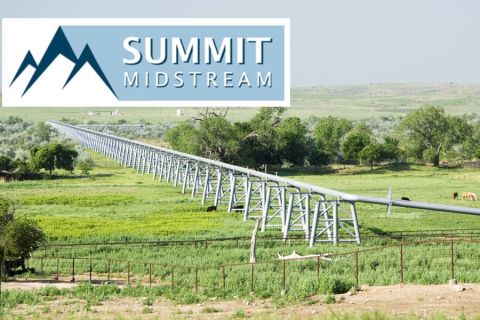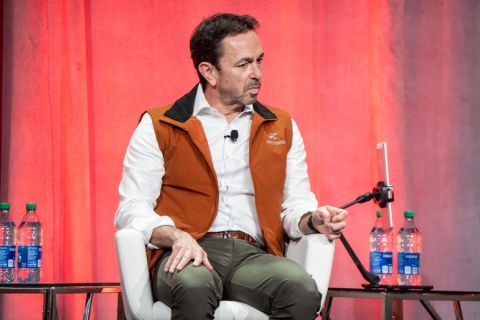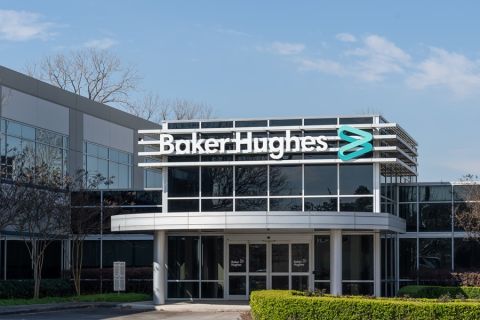
Subsea pump system manufacturers are being pushed hard by operators to lower their costs and raise performance efficiency but are rising to the challenge through both internal technology development and joint industry projects. (Source: Aker Solutions)
Despite the downturn impacting every aspect of the oil and gas sector, the race to develop better technological solutions is still very much on when it comes to getting the next generation of subsea pumps onto the market.
Driven by both the requirement to further improve pump performance and lower development costs, Aker Solutions is in the midst of qualifying its eagerly anticipated MultiBooster pump, while GE Oil & Gas has launched a joint industry project (JIP) in partnership with Statoil, Total and two other operators to develop a new subsea boosting system.
Aker continues to invest in developing and qualifying technologies specifically for subsea processing, according to Marco Gabelloni, regional concept line manager.
Qualification
Updating delegates at the Subsea Expo event in Aberdeen, Scotland, Gabelloni said, “In this scenario of capital constraints and prolonged oil price pressure, we believe innovation is really a key factor to reduce costs. Our subsea multiphase pump, MultiBooster, is currently under qualification, and we’re planning to complete the qualification work this year.”
The new high-power pump is being developed as part of an ongoing JIP with Exxon Mobil, Statoil and Total, which began at year-end 2012. Gabelloni said, “The target was to develop the most powerful motor for a subsea pump capable of providing up to 6 MW of power to cover the entire range of gas volume fractions [GVFs] and to provide more than 100 bar and 70% GVF.”
A lot of desktop engineering had been done on the new motor, he said, with full-scale two-stage impeller testing being carried out to verify the capability of the design. “We have built a new multiphase test loop at our facility in Tranby, Norway, which was a big investment, but it enabled us to test all different types of conditions. After all this work we are now approaching the final stage of this development.”
6-MW motor
Gabelloni said the MultiBooster has a high-power 6-MW 6,000-rpm motor, meaning fewer pumps will be needed than previously on a development to carry out the same amount of work “with of course the cost benefit for our customers.”
The motor—a full Aker Solutions design—is a key component of the system. “We have performed several tests. We have been able to run this model successfully with a speed range from 1,500 rpm to 6,300 rpm. We will be able to test the 6-MW maximum in the next phase when we use the electric submersible pump [ESP] we will have installed in our facility. We have also developed new cables for these motors that are able to withstand higher temperatures,” he added.
Among a string of tests completed or still being carried out was an external drive test, a low-load test and a heat run test to find hotspots inside the motor. Vibration and cooling tests also have been performed.
Gabelloni continued, “We also plan to run a locked rotor test for the electrical features and the torque and some other testing. Our plan is to complete this qualification work on the motor by June this year. Then after that the motor will be coupled with the pump and run with the complete motor and pump test in the pit.
“We are now preparing the test pit, and in it we will store the flow conditioning unit, which is the vessel upstream from the pump, which takes care of any disturbance there might be in the system. We will run the complete system during the test—flow conditioning unit, pump and the ESP. The plan for this is to finalize activities by December this year.”
The MultiBooster also contains an advanced condition monitoring system with two sets of proximity probes in four locations—four radial probes plus two axial probes. “The advantage of having this many probes is that we can accurately measure the displacements of the rotor better than with the previous systems,” he pointed out.
The pump is of course the latest in a long development line that Aker has followed from its topsides pumps for North Sea platforms in the 1970s to the liquid booster for the Tyrihans project in the mid-2000s and the subsea compression equipment on the Åsgard Field offshore Norway.
Hybrid booster
Gabelloni added that Aker has three pump models including single phase pumps—the liquid booster—that can be used for condensate boosting or for water injection.
“If you move toward a higher gas fraction, then we have the hybrid booster. This has been specifically developed for moderate GVF applications, 30% to 40%, typically for subsea separation and boosting projects. These pumps are all centrifugal pumps, so they use impellers in the case of a liquid booster to increase the pressure for single-phase applications.
“For the hybrid booster and MultiBooster we have developed a new set of impellers—mixed flow impellers—that are able to handle gas content in the wells. With this hybrid booster you can have a combination of those two technologies.”
All the pumps have the same footprint, although the length will differ depending on the number of impellers.
He concluded, “When it comes to subsea boosting, our strategy in the face of challenging market conditions is—on one side—to really develop these new core technologies, the new motor [and] the new mixed flow impeller. Together those technologies allow our pumps to have the best combination of high density and high flow in the industry today. On the other hand, we are working on the simplification and standardization of the complete pump system together with our customers and suppliers. We believe that this combination gives immediate savings due to cooperation across the supply chain.”
Contra-rotating pump
Similar to Aker, an industry JIP also was recently launched by GE Oil & Gas with Statoil, Total and two other unspecified operators to develop a new subsea boosting system.
The system, called the Modular Contra-rotating Pump (MCP), uses technology taken from its aviation business and is a “first-of-its-kind approach” to seabed boosting, according to GE. The company said that by using the MCP, more oil could be unlocked and accessed in both new and mature wells by reducing the topside and subsea footprints by up to 50%.
There is also no need for equipment such as the barrier fluid system required in conventional subsea boosting systems.
The simplified boosting system under development in the JIP has the potential to reduce life-cycle costs by up to 30% and improve operational flexibility for operators, the company stated.
“Collaboration and technology have always underpinned our commitment to quality and delivery, and they continue to do so,” GE Oil & Gas President and CEO Lorenzo Simonelli said in a press release.
“We believe that by working closely with customers to understand and respond to their needs, we can deliver faster, better solutions that support them through these challenging times while helping to build a more productive, cost-effective and resilient future oil and gas industry.”
Not a boosting advance but definitely subsea, GE Oil & Gas also confirmed the introduction of its SFX wellhead system, which it said will provide up to 16 times fatigue resistance improvement over its existing systems. The standardized wellhead solution is aimed squarely at operator requirements to improve efficiencies, eliminate nonproductive time and reduce costs.
Contact the author at jsheehan@hartenergy.com.
Recommended Reading
Summit Midstream Sells Utica Interests to MPLX for $625MM
2024-03-22 - Summit Midstream is selling Utica assets to MPLX, which include a natural gas and condensate pipeline network and storage.
Summit Midstream Launches Double E Pipeline Open Season
2024-04-02 - The Double E pipeline is set to deliver gas to the Waha Hub before the Matterhorn Express pipeline provides sorely needed takeaway capacity, an analyst said.
Kinder Morgan Exec: Don’t Count Out Midstream in M&A Frenzy
2024-04-02 - Kinder Morgan’s Allen Fore said 2024 should be an ‘interesting’ year in M&A during a discussion at DUG GAS+ Conference and Expo.
Baker Hughes Tapped for NatGas, Hydrogen Technology
2024-04-03 - Baker Hughes will provide three of its NovaLT 12 gas turbine driven compressor trains for a new gas compressor station in Sulmona, Italy.
Imperial Oil Shuts Down Fuel Pipeline in Central Canada
2024-03-18 - Supplies on the Winnipeg regional line will be rerouted for three months.





